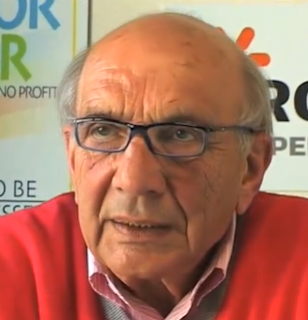Cesare Cremonini - philosopher
Great thinker famous for Galileo ‘denial’
The philosopher Cesare Cremonini, the contemporary and friend of Galileo Galilei who famously refused to look at the Moon through Galileo’s telescope, died on this day in 1631 in Padua. Cremonini was considered one of the great thinkers of his time, a passionate advocate of the doctrines of the ancient Greek philosopher Aristotle. He was paid a handsome salary by his patron, Alfonso II d’Este, the Duke of Ferrara, and kings and princes regularly sought his counsel. He struck up a friendship with the poet, Torquato Tasso, while he was studying in Ferrara, and met Galileo in 1550 after he was appointed by the Venetian Republic to the chair of the University of Padua. The two built a relationship of respect and friendship that endured for many years, despite many differences of opinion, yet in 1610 their divergence of views on one subject created an impasse between them. It came about when Galileo observed the surface of the Moon through his telescope and proclaimed that he had discovered mountains on the Moon. But Cremonini said that Aristotle had proved that the Moon could only be a perfect sphere and was having none of Galileo’s claim that it was not, refusing Galileo’s invitation to see for himself. Read more…
_________________________________________________________
Petrarch – Renaissance poet
Writer whose work inspired the modern Italian language
Renaissance scholar and poet Francesco Petrarca died on this day in 1374 at Arquà near Padua, now renamed Arquà Petrarca. Known in English as Petrarch, he is considered to be an important figure in the history of Italian literature. He is often credited with initiating the 14th century Renaissance, after his rediscovery of Cicero’s letters, and also with being the founder of Humanism. In the 16th century, the Italian poet, Pietro Bembo, created the model for the modern Italian language based on Petrarch’s works. Petrarch was born in Arezzo in Tuscany in 1304. His father was a friend of the poet Dante Alighieri, but he insisted that Petrarch studied law. The poet was far more interested in writing and in reading Latin literature and considered the time he studied law as wasted years. Petrarch’s first major work, Africa, about the Roman general, Scipio Africanus, turned him into a celebrity. In 1341 he became the first poet laureate since ancient times and his sonnets were admired and imitated throughout Europe. Petrarch travelled widely throughout Italy and Europe during his life and once climbed Mount Ventoux near Vaucluse in France just for pleasure, writing about the experience afterwards. Read more…
_______________________________________________________
Jacopo Tiepolo - Doge of Venice
Ruler laid down the law and granted land for beautiful churches
Jacopo Tiepolo, the Doge who granted the land for the building of Basilica di Santi Giovanni e Paolo and Basilica di Santa Maria Gloriosa dei Frari, died on this day in 1249 in Venice. His election as Doge in 1229 had sparked a feud between the Tiepolo and Dandolo families, which led to the rules being changed for future elections. He also produced five books of statutes setting out Venetian law which was to change life in Venice significantly, bringing a raft of civil and economic regulations to which Venetians were obliged to adhere. Tiepolo, who was also known as Giacomo Tiepolo, had previously served as the first Venetian Duke of Crete and had two terms as podestà – chief administrator - in Constantinople. He acted as the de facto ruler of the Latin Empire, negotiating treaties with the Egyptians and the Turks. Tiepolo was elected Doge, a month after his predecessor, Pietro Ziani, abdicated. At the election a stalemate was reached between Tiepolo and his rival, Marino Dandolo, both of them having 20 votes each. The contest was decided by drawing lots, which led to Tiepolo’s victory. Read more…
















